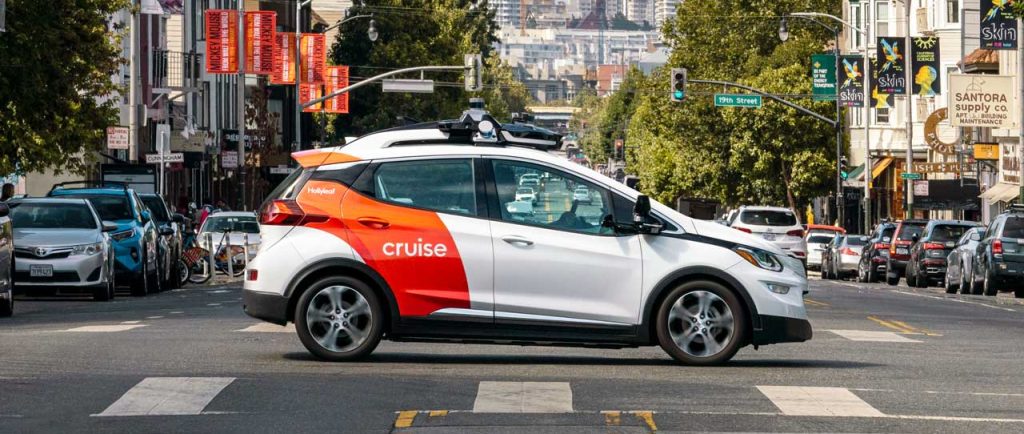Paragraph 1: Introduction – The Shift in GM’s Autonomous Driving Strategy and its Impact on Microsoft
General Motors (GM) recently announced a significant strategic shift in its approach to autonomous driving, impacting its Cruise robotaxi business and consequently, Microsoft, a key investor. GM decided to discontinue funding Cruise’s robotaxi development, opting instead to integrate Cruise and its internal teams into a unified initiative focusing on autonomous and assisted driving technologies. This decision stems from GM’s reassessment of the robotaxi market’s landscape, which is becoming increasingly competitive and demands substantial resources for scaling. The move led Microsoft to announce an $800 million charge on its investment in Cruise, affecting its earnings per share for the quarter ending December 31.
Paragraph 2: Microsoft’s Investment in Cruise and the Strategic Partnership
Microsoft’s involvement with Cruise began in 2021 with a strategic partnership encompassing hardware, software, and cloud solutions for autonomous vehicles. The partnership included a substantial investment by Microsoft as part of a broader $2 billion funding round for Cruise, joining other significant investors like GM, Honda, and various institutional investors. GM maintains a dominant ownership stake in Cruise, holding approximately 90%. The connection between the companies deepened with the appointment of Marc Whitten, a former Microsoft executive, as Cruise’s CEO earlier in 2024. This background highlights the close collaboration and shared vision between the two companies prior to GM’s strategic shift.
Paragraph 3: The Financial Implications for Microsoft
The discontinuation of GM’s funding for Cruise’s robotaxi operations resulted in Microsoft taking an $800 million charge on its investment. This charge translates to a 9-cent reduction in Microsoft’s earnings per share for the final quarter of 2024. Financial analysts had projected earnings of $3.14 per share, a figure now revised downward due to this unexpected charge. While the charge is significant, it represents a strategic adjustment within a rapidly evolving and highly competitive market.
Paragraph 4: GM’s Rationale for the Strategic Shift
GM’s decision to cease funding Cruise’s robotaxi development was primarily driven by the significant time and resources required to scale such a business in an increasingly competitive environment. The robotaxi market is attracting substantial investment and innovative players, making it a challenging landscape for new entrants and even established players to achieve profitability. GM recognized that focusing its resources on a broader autonomous and assisted driving strategy, consolidating its internal expertise with Cruise’s technology, offers a more sustainable and potentially lucrative long-term approach.
Paragraph 5: The Competitive Landscape of the Robotaxi Market
The robotaxi market is characterized by intense competition from established players and emerging companies. Waymo, a subsidiary of Alphabet, is aggressively expanding its robotaxi services across the United States. Tesla, under Elon Musk’s leadership, is actively developing its Cybercab service. Amazon is also a contender with its Zoox autonomous ride-hailing service. This competitive pressure necessitates substantial investment and innovative strategies for any company seeking to succeed in this rapidly evolving market. GM’s decision reflects a recognition of this challenging landscape and a calculated move to adapt its strategy accordingly.
Paragraph 6: The Future of Autonomous Driving at GM and the Implications for Cruise
GM’s new strategy involves merging Cruise’s expertise with its internal teams to create a unified autonomous and assisted driving technology development initiative. This consolidation aims to leverage the strengths of both groups, streamlining efforts and potentially accelerating progress. While the specific implications for Cruise’s future direction remain to be fully outlined, the integration suggests a shift away from the immediate pursuit of a standalone robotaxi business. Instead, the focus appears to be on developing broader autonomous driving technologies that can be applied to various vehicle types and use cases, potentially including features for personal vehicles and commercial fleets, offering greater flexibility and market reach. This strategic pivot reflects GM’s adaptation to the evolving dynamics of the autonomous driving industry, prioritizing a more sustainable and comprehensive approach to innovation in this space.


